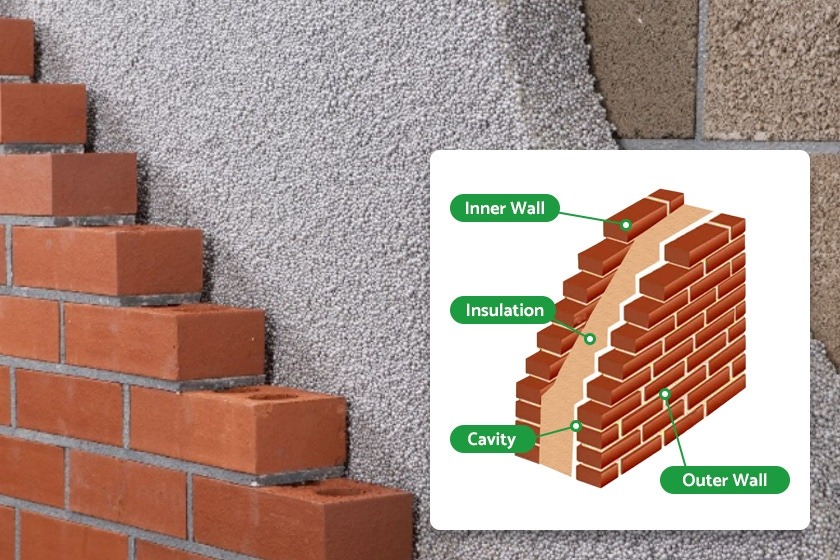If you’re thinking about insulating your home, renovating, or just curious about how your house is built, you might have come across the terms “cavity walls” and “solid walls.” They may sound similar, but they’re actually quite different — and knowing which one you have can save you money, help you choose the right insulation, and even prevent damp problems down the line.
Let’s break it down in plain English.
What Exactly Is a Cavity Wall?
A cavity wall is basically two walls with a gap in the middle.
- The outer wall faces the weather and is usually made of brick or stone.
- The inner wall is also made of brick or block and faces into your home.
- Between them is a cavity — an empty space that can be filled with insulation.
Why builders did this: the gap stops rainwater from soaking through to the inside wall and helps keep heat in (especially once it’s insulated).
Why people like cavity walls:
- They’re good at keeping homes warm when insulated.
- They help prevent damp from creeping inside.
- Adding insulation is relatively straightforward and affordable.
What Exactly Is a Solid Wall?
A solid wall is just one thick wall with no gap inside — the bricks or stones go all the way through.
- You’ll mostly find them in older homes built before the 1920s.
- They’re usually thicker than a single leaf of a cavity wall but not as efficient at holding in heat.
Good things about solid walls:
- They’re strong and long-lasting.
- They block sound quite well.
- They suit older, traditional buildings.
Not-so-good things:
- Without extra insulation, they lose heat quickly.
- They can let in damp more easily if not maintained properly.
How Can You Tell Which One You Have?
There are a few tricks:
- Check the brick pattern –
- Cavity walls usually have all the bricks laid lengthways (known as a stretcher bond).
- Solid walls often have a mix — some bricks laid lengthways and others widthways (like in an English or Flemish bond).
- Measure the thickness –
- Less than about 260mm (10 inches) → probably a solid wall.
- Around 300mm (12 inches) or more → probably a cavity wall.
- Look at the age of your home –
- Pre-1920 homes often have solid walls.
- Homes built after the 1930s are usually cavity walls.
Insulating Cavity Walls vs Solid Walls
| Wall Type | Best Insulation Method | Cost Level | Energy Savings |
|---|---|---|---|
| Cavity Wall | Inject insulation into the gap | Low to Medium | High |
| Solid Wall | Add insulation boards inside or outside | Higher | High |
Which Is Better?
It depends on what you’re looking for.
- If you want energy efficiency, cavity walls (when insulated) tend to be better.
- If you have a heritage property, solid walls might be the way to go for authenticity — but they’ll need more work to insulate properly.
- For damp resistance, a well-insulated cavity wall usually performs better.
The Bottom Line
Whether your home has cavity walls or solid walls will affect how warm it feels, how much you pay in heating bills, and how you approach insulation. If you’re unsure, you can do a quick check yourself — or get a professional surveyor to take a look. Knowing this small detail can make a big difference in how you improve and maintain your home.
If you’d like, I can now blend this with an ECO4 eligibility section so it also explains how homeowners could get free insulation funding depending on their wall type — that way it becomes useful for both education and marketing.
